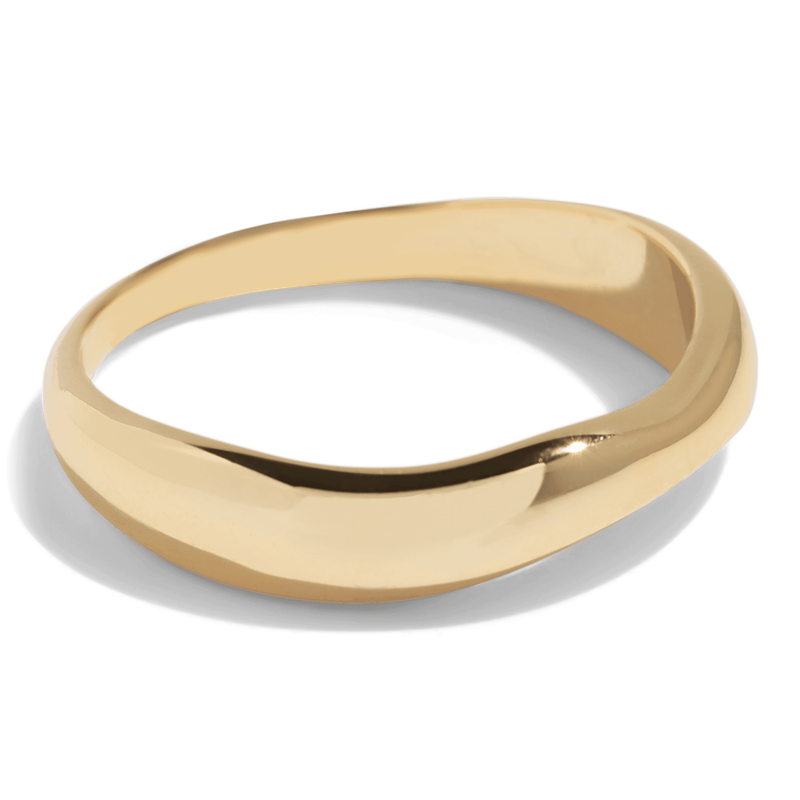Kuningan vs.. 925 Perak untuk Cincin Berlapis Emas: Panduan Manufaktur yang Komprehensif

Perkenalan
When producing gold-plated rings, manufacturers and designers must carefully consider their base metal selection. The two most popular options—brass and 925 Sterling Silver—each offer distinct advantages and challenges. This in-depth 5,000-word guide examines the key factors in choosing between brass and silver for gold-plated ring production, termasuk:
-
Material Properties & Komposisi
-
Cost Analysis & Budget Considerations
-
Daya tahan & Longevity Comparison
-
Plating Adhesion & Finish Quality
-
Fleksibilitas desain & Production Feasibility
-
Skin Sensitivity & Hypoallergenic Factors
-
Environmental & Ethical Sourcing Implications
-
Studi Kasus & Real-World Applications
Pada akhirnya, you’ll have a clear understanding of which base metal best suits your gold-plated ring production needs.
1. Material Properties & Komposisi
Kuningan (Paduan Tembaga-Seng)
-
Komposisi: Khas 60-80% tembaga + 20-40% seng
-
Key Characteristics:
-
High malleability, excellent for intricate designs
-
Antimikroba alami (copper content)
-
Denser than silver (8.73 g/cm³ vs. 10.49 g/cm³)
-
Lower melting point (900-940° C.)
-
925 Sterling Silver (92.5% Perak + 7.5% Tembaga)
-
Komposisi: 92.5% perak murni + 7.5% tembaga (for hardness)
-
Key Characteristics:
-
Softer than brass but more ductile
-
Higher intrinsic value (precious metal status)
-
Prone to tarnishing without plating/protection
-
Melting point: ~890°C
-
Winner for Plating Adhesion: Kuningan (copper content improves bonding)
2. Cost Analysis & Budget Considerations
| Faktor | Kuningan | 925 Perak |
|---|---|---|
| Biaya Bahan | 3-8/kg | 600-800/kg |
| Plating Efficiency | Bagus sekali | Bagus (requires thicker plating) |
| Waste & Recycling | Low-cost scrap value | Higher scrap value recovery |
| MOQ Feasibility | Better for bulk orders | More expensive for large quantities |
Cost-Effectiveness Winner: Kuningan (Ideal for fashion jewelry brands)
Luxury Perception Winner: 925 Perak (Preferred for premium collections)
3. Daya tahan & Longevity Comparison
Brass Rings
✔ More scratch-resistant than pure silver
✔ Heavier weight provides a premium feel
✔ Less prone to bending under pressure
✖ Can oxidize (develop patina) if plating wears off
925 Cincin perak
✔ Naturally hypoallergenic (better for sensitive skin)
✔ Easier to resize/repair due to malleability
✖ Softer metal – may deform with daily wear
✖ Requires anti-tarnish coating beneath gold plating
Durability Winner: Kuningan (for long-term wear resistance)
Luxury Longevity Winner: 925 Perak (if properly maintained)
4. Gold Plating Performance
Pelapisan pada Kuningan
-
Better adhesion due to copper content
-
Thinner plating required (1-2 Mikron)
-
Less likely to show base metal if scratched
Plating on 925 Perak
-
May require nickel barrier layer (for hypoallergenic needs)
-
Needs 2-3 microns minimum to prevent tarnish bleed
-
Higher risk of “peeling” if plating is too thin
Plating Efficiency Winner: Kuningan
5. Desain & Manufacturing Factors
| Consideration | Kuningan | 925 Perak |
|---|---|---|
| Casting Detail | Excellent for intricate designs | Slightly less crisp edges |
| Engraving Quality | Bagus, but harder to hand-engrave | Smoother for fine engraving |
| Pengaturan batu | Stronger prongs | More malleable prongs |
| Polishing Finish | Requires more effort | Naturally brighter surface |
Terbaik untuk Desain Detail: Kuningan
Best for Handcrafted Luxury: 925 Perak
6. Hypoallergenic & Keamanan Kulit
-
Kuningan: May cause reactions for nickel-sensitive wearers (unless nickel-free)
-
925 Perak: Naturally hypoallergenic (Ideal untuk kulit sensitif)
Larutan:
-
Menggunakan nickel-free brass alloys (MISALNYA., C26000)
-
Apply rhodium or palladium barrier under gold plating
Safety Winner: 925 Perak
7. Keberlanjutan & Ethical Factors
-
Kuningan:
✔ Often made from recycled materials
✖ Zinc mining has environmental impact -
925 Perak:
✔ Recyclable indefinitely
✖ Silver mining has higher ecological footprint
Eco-Friendly Choice: Both can be sustainable with responsible sourcing
8. Real-World Case Studies
Kasus 1: Fashion Jewelry Brand (Brass Base)
-
Produk: Gold-plated statement rings
-
Hasil:
-
30% lower production cost vs. perak
-
No customer complaints about tarnishing
-
18-month plating durability with proper care
-
Kasus 2: Luxury Designer (925 Silver Base)
-
Produk: High-end gold-plated wedding bands
-
Hasil:
-
Higher perceived value justified 2x retail price
-
Required thicker plating (3 Mikron) for longevity
-
Preferred by customers with metal allergies
-
Rekomendasi Akhir: Which Should You Choose?
Choose Brass If You Need:
✅ Cost-effective production
✅ Heavy, durable rings
✅ Complex geometric designs
✅ Bulk order feasibility
Memilih 925 Silver If You Need:
✅ Luxury market positioning
✅ Hypoallergenic safety
✅ Easier resizing/repairs
✅ Higher perceived value
Kesimpulan
Both brass and 925 silver are excellent choices for gold-plated rings, but the best option depends on your anggaran, target market, and design requirements.
-
Brass wins untuk keterjangkauan, daya tahan, and plating efficiency
-
925 Silver wins untuk daya tarik kemewahan, hypoallergenic properties, and prestige
Untuk Tip: Some brands use brass for fashion lines Dan 925 silver for premium collections to balance cost and quality.
